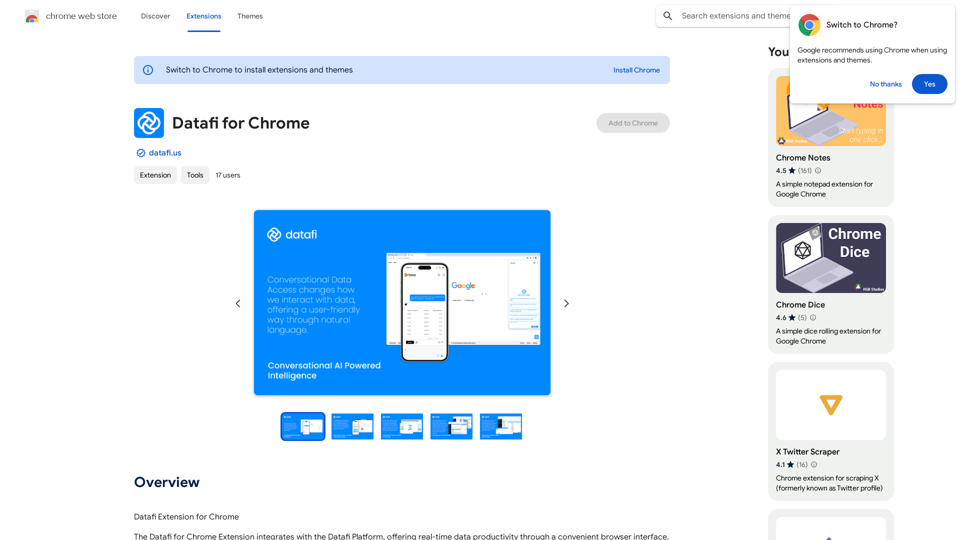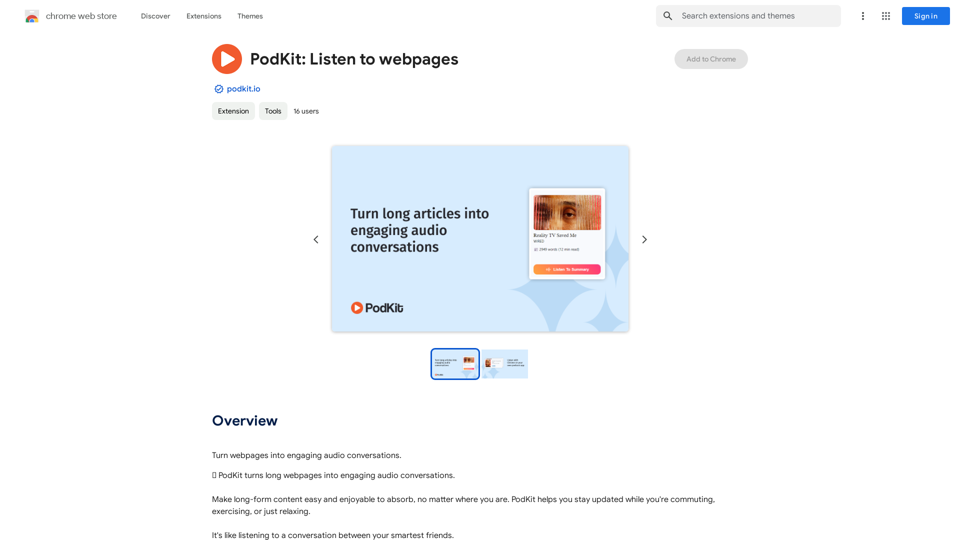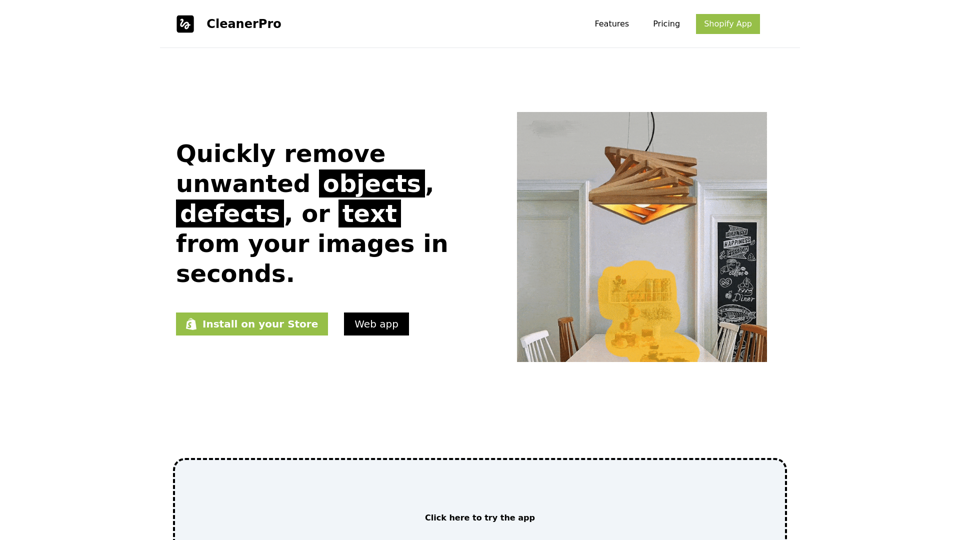Wispy-1 is a personal AI agent for Chrome that enhances web browsing with AI-powered experiences. It allows users to create, share, and discover unique AI capabilities while browsing. Wispy-1 empowers users to invoke AI prompts, boosting their creative abilities on the web. With a free initial energy allowance and premium options available, Wispy-1 offers a versatile platform for AI-enhanced web interactions.
Wispy-1 - Personal AI Agent for Chrome
Discover, Use, and Share AI Abilities for the Web, right from your Chrome browser.
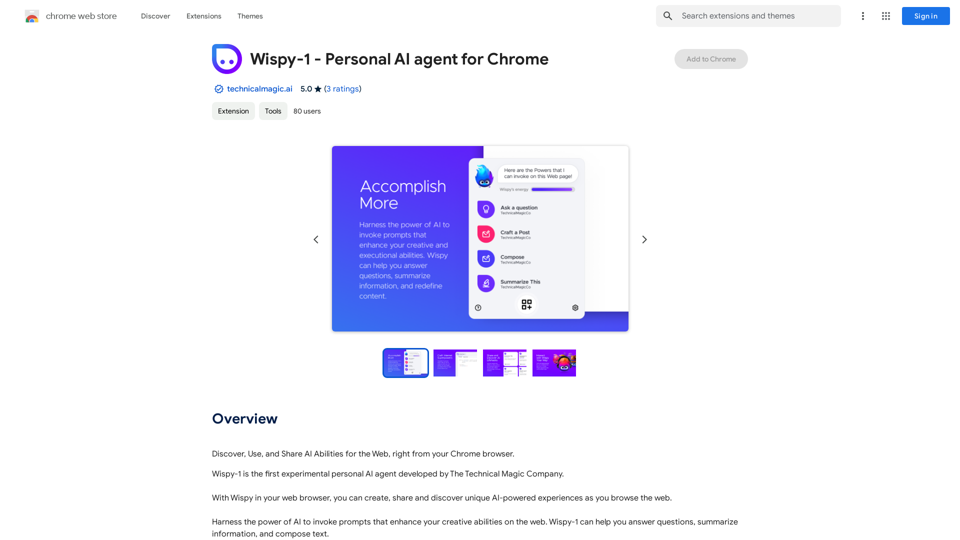
Introduction
Feature
AI-Powered Web Experiences
Wispy-1 enables users to create, share, and discover unique AI-powered experiences while browsing the web. This feature transforms ordinary web surfing into an interactive and enhanced journey.
Customizable AI Prompts
Users can harness the power of AI to invoke prompts that enhance their creative abilities. This functionality allows for personalized and context-specific AI assistance during web browsing.
Expandable Gallery of Powers
Wispy-1 offers an ever-expanding gallery of powers built by the community. Users can add and explore new abilities, continuously expanding the tool's capabilities to suit various needs.
Flexible Pricing Model
The tool is free to start with an initial energy allowance for invoking AI powers. For more extensive use, premium memberships are available at $4.99/month, catering to different user needs and usage levels.
Easy Installation and Usage
Users can quickly install Wispy-1 from the Chrome Web Store and start exploring its gallery of powers. The tool supports both default and custom powers, allowing for immediate use and personalization.
Versatile Applications
Wispy-1 can be used for various tasks, including:
- Summarizing articles and videos
- Answering questions and composing text
- Creating and editing templated AI prompts
- Sharing and discovering new AI-powered experiences
This versatility makes it a valuable tool for enhancing productivity and creativity across different web-based activities.
FAQ
What is Wispy-1?
Wispy-1 is a personal AI agent for Chrome that allows users to create, share, and discover unique AI-powered experiences while browsing the web. It enhances creative abilities through AI-powered prompts and features an expandable gallery of community-built powers.
How do I get started with Wispy-1?
To get started with Wispy-1:
- Install it from the Chrome Web Store
- Launch Wispy-1 after installation
- Explore the gallery of powers
- Use default powers or add custom ones
- Invoke AI prompts to enhance your browsing experience
Is Wispy-1 free to use?
Wispy-1 offers a free starting option with an initial energy allowance for invoking AI powers. For users requiring more extensive capabilities, premium memberships are available at $4.99/month.
Can I create my own custom powers in Wispy-1?
Yes, Wispy-1 allows users to add and explore new abilities. The tool features an ever-expanding gallery of powers built by the community, enabling users to customize their experience and create powers tailored to their specific needs.
Latest Traffic Insights
Monthly Visits
193.90 M
Bounce Rate
56.27%
Pages Per Visit
2.71
Time on Site(s)
115.91
Global Rank
-
Country Rank
-
Recent Visits
Traffic Sources
- Social Media:0.48%
- Paid Referrals:0.55%
- Email:0.15%
- Referrals:12.81%
- Search Engines:16.21%
- Direct:69.81%
Related Websites
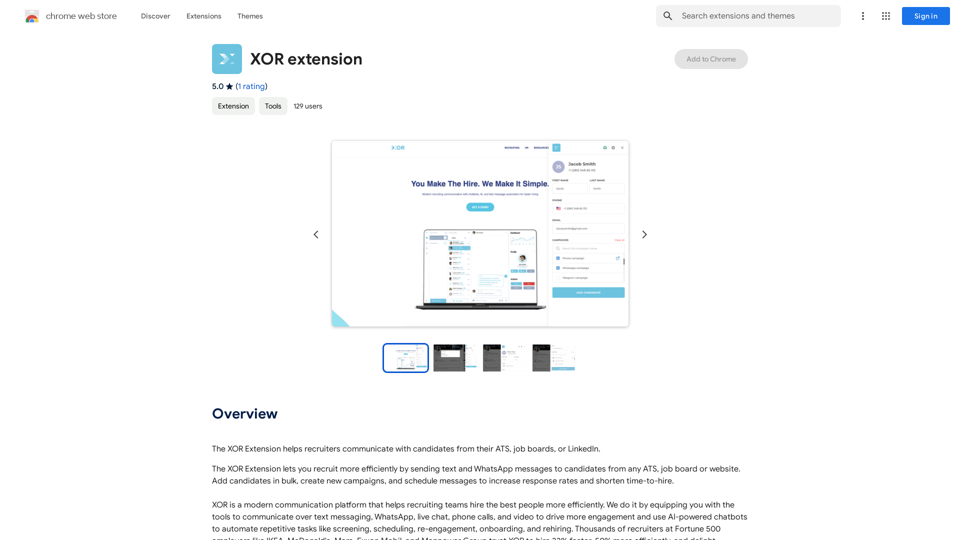
The XOR Extension lets recruiters talk to candidates from their Applicant Tracking System (ATS), job boards, or LinkedIn.
193.90 M
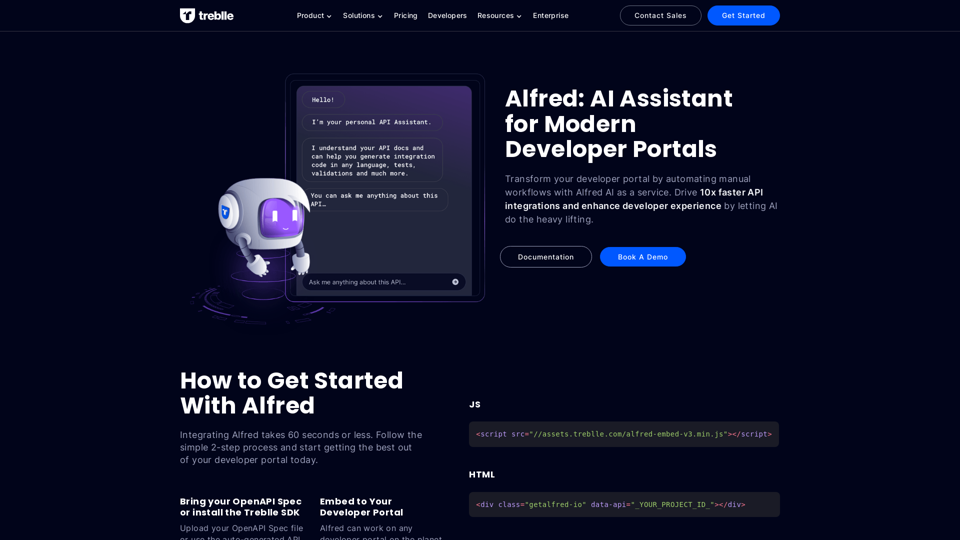
Transform your developer portal by automating manual workflows with Alfred AI as a service. Drive 10x faster API integrations and enhance developer experience by letting AI do the heavy lifting.
67.31 K
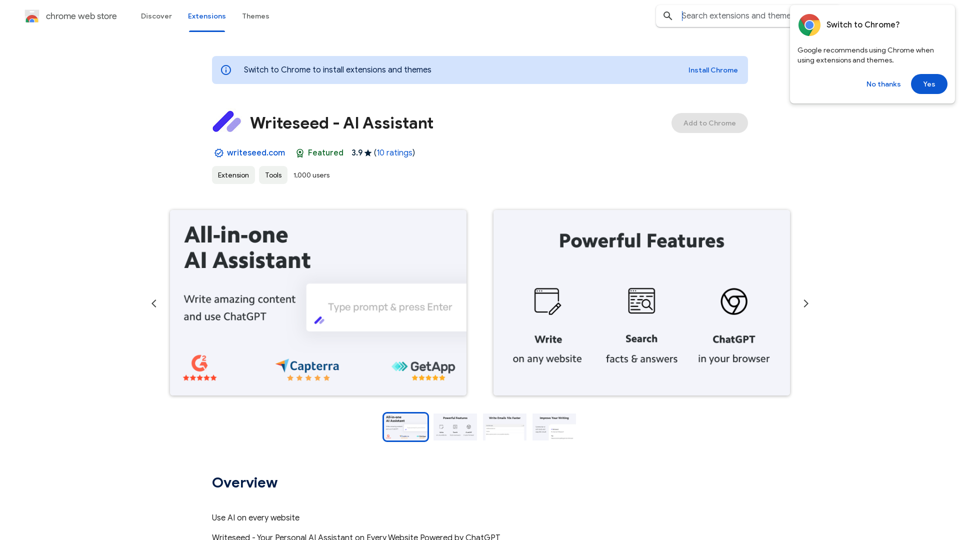
Using AI on Every Website With the rapid advancement of technology, Artificial Intelligence (AI) has become an integral part of our daily lives. From virtual assistants to self-driving cars, AI is revolutionizing the way we live and work. One area where AI can have a significant impact is on websites. Imagine a website that can learn from your behavior, adapt to your needs, and provide personalized experiences. In this article, we'll explore the possibilities of using AI on every website. Enhanced User Experience AI can analyze user behavior, preferences, and interests to provide a tailored experience. For instance, an e-commerce website can use AI to recommend products based on a user's browsing history and purchase behavior. This can lead to increased customer satisfaction, loyalty, and ultimately, revenue. Improved Website Performance AI can help optimize website performance by analyzing user traffic patterns, identifying bottlenecks, and providing insights to improve loading times. This can result in higher search engine rankings, increased conversions, and a better overall user experience. Personalized Content AI-powered content generation can help create personalized content for users based on their interests, preferences, and behavior. This can include customized product recommendations, tailored blog posts, and even personalized email marketing campaigns. Enhanced Security AI-powered security systems can detect and prevent cyber threats in real-time, providing an additional layer of protection for websites and their users. This can include identifying and blocking malicious traffic, detecting phishing attempts, and preventing data breaches. Chatbots and Virtual Assistants AI-powered chatbots and virtual assistants can provide 24/7 customer support, helping users navigate websites, answer questions, and resolve issues. This can lead to increased customer satisfaction, reduced support queries, and improved overall user experience. The Future of Web Development As AI technology continues to evolve, we can expect to see even more innovative applications on websites. From AI-powered design tools to AI-driven website analytics, the possibilities are endless. The future of web development is exciting, and AI is at the forefront of this revolution. Conclusion Using AI on every website can have a transformative impact on the way we interact with the internet. From enhanced user experiences to improved website performance, personalized content, enhanced security, and chatbots, the benefits of AI are undeniable. As technology continues to advance, we can expect to see even more innovative applications of AI on websites. The future is exciting, and AI is leading the way.
193.90 M
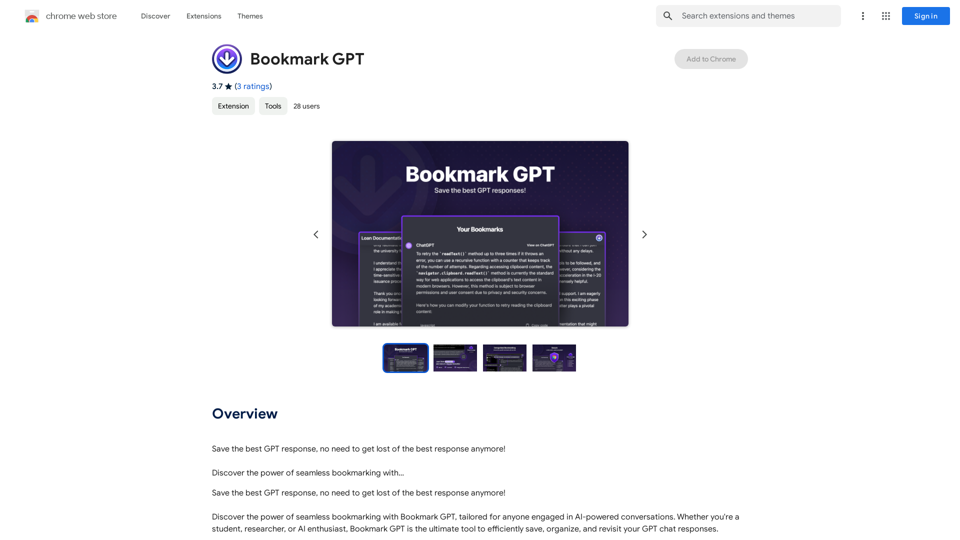
Save the best GPT response, no need to get lost of the best response anymore! Discover the power of seamless bookmarking with...
193.90 M
